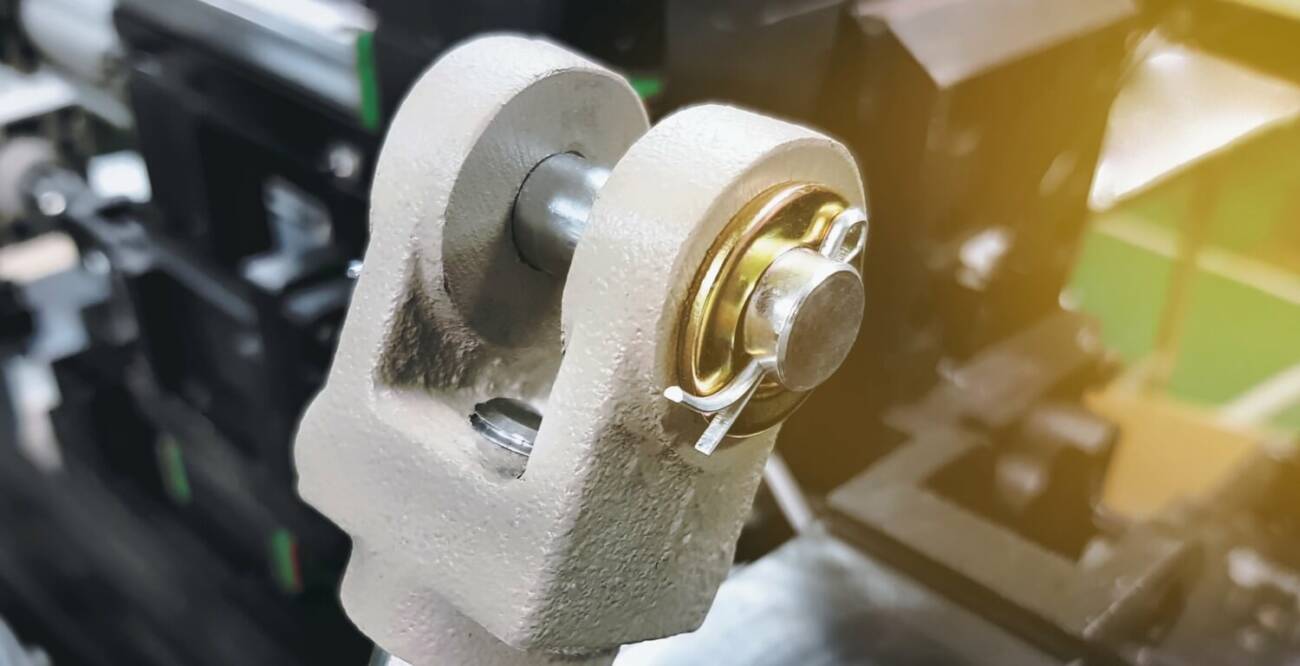Accurate and Reliable Force Feedback Using Load Pins


When an engineer decides to upgrade the load control capabilities of an existing machine, the first task is usually to figure out how a load cell can be situated within the load chain of interest. The machine in question has often relied on some sort of pressure or current feedback to estimate whatever forces are being generated. But these derived measurement techniques ultimately limit the control capabilities of a system because of their inferior accuracy, resolution, repeatability, and responsiveness.
Upgrading a pressure or current-based feedback system with a load cell will improve almost every aspect of load measurement and control. But, because a load cell must be situated directly within the load chain, this upgrade can be inconvenient, impractical, or impossible. Existing machines will usually need to be physically modified to accommodate a new load cell and its associated fixturing.
The Load Pin Solution
In cases where installing a traditional load cell would be difficult, a load pin may be an attractive alternative. Since the cylindrical geometry of a load pin mimics a common clevis pin, a load pin can replace an existing clevis pin without having to modify the clevis joint itself. This allows an engineer to improve machine performance by merely swapping out a clevis pin for a load pin while needing to alter the balance of the mechanical system.
Achieving Acceptable Tolerances

Comparing the performance of a load pin to a traditional load cell might create a glass-half-empty perspective. Using the existing pressure or current measurement feedback system might be a more apt baseline and will paint a considerably rosier picture. Force estimates derived from a pressure or current measurement will have accuracy tolerances larger than ±5%, more than an order of magnitude worse than a load pin.
And, even though this ballpark accuracy estimate for a pressure or current-based system is quite unimpressive, it still might be overly-optimistic. In most cases, just a simple conversion factor is used to re-dimension the signal from a pressure or current measurement into units of force. This simple arithmetic ignores a variety of important error contributors: internal friction, dimensional tolerances, temperature variability, measurement latency.
Signal Processing Guide
In most cases, just a simple conversion factor is used to re-dimension the signal from a pressure or current measurement into units of force. This simple arithmetic ignores a variety of important error contributors: internal friction, dimensional tolerances, temperature variability, and measurement latency.
So, even though load pins admit to being less accurate than other load cell designs, using a load pin to upgrade a pressure-based or current-based measurement system can still make a dramatic performance improvement.
Four Parameters for Specifying a Load Pin
- Load Pin Geometry: usually mimics the diameter and length of the pin/cylinder or that it will replace
- Force Capacity: the maximum force that the load pin should measure
- Output Signal: whatever signal that the PLC, indicator, or controller prefers; this can be an analog signal such as 0 to 10V, ±10V, or 4-20mA or a digital signal such as Canbus, RS-485, or Bluetooth wireless
- Environmental Considerations: outdoor applications usually insist upon non-oxidizing materials like stainless steel and higher IP ratings; added protections against electrical damage are also common

As automation and controls continue to generally expand within industrial machinery, load pins should likewise enjoy continued popularity.
Transcell plans to help our customers with these important force measurement applications by offering our custom load pin designs paired with customized signal outputs.
Custom Solutions for Precise Force Measurement
Transcell plans to help our customers with these important force measurement applications by offering our custom load pin designs paired with customized signal outputs.
Contact Transcell
FAQs
Load pins house a double-ended shear beam load cell inside their casing. This load cell measures the forces on the load pin through strain gauges embedded in specific locations in its body. The data acquisition module receives these strain gauges’ electric output, processes it, and interprets it as a force.
A load pin load cell replaces bolts, clevis, sheaves, equalizer pins, and other load-bearing components to measure tensile and compression forces. They are internally gauged with a bored center containing strain gauges, allowing them to convert force into an electrical signal for engineers to collect data accurately.
Load pins are versatile direct force sensors for use across many industry applications.
- Overload protection
- Easy installation and integration
- Real-time monitoring
- Direct force measurements
- Durable construction
- Repeatable results
- Compact, integrated design
Load pins replace static clevis pins in rigging and equipment configurations. The primary uses include:
- Winch, crane, and lifting equipment
- Hydraulic machinery and heavy equipment
- Rigging and tension monitoring
- Structural construction
- Testing
- Landing gear
- Marine mooring lines
- Pulley axles
- Brake anchors
